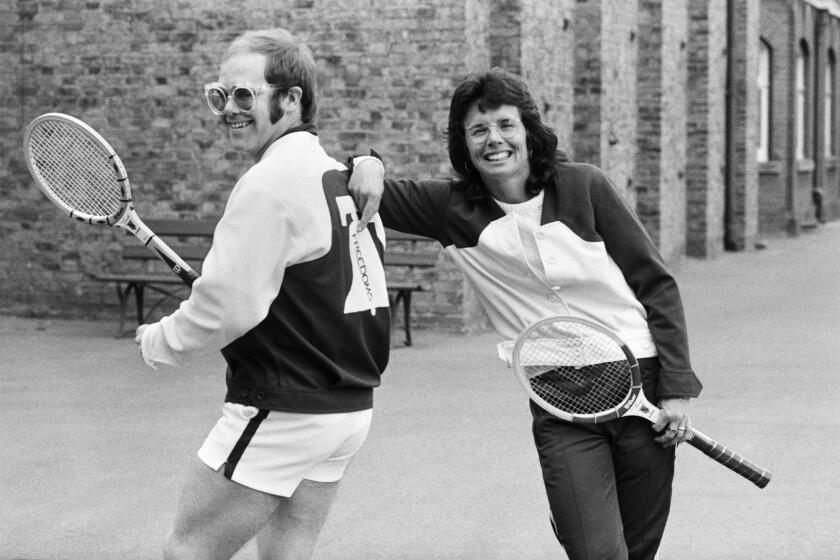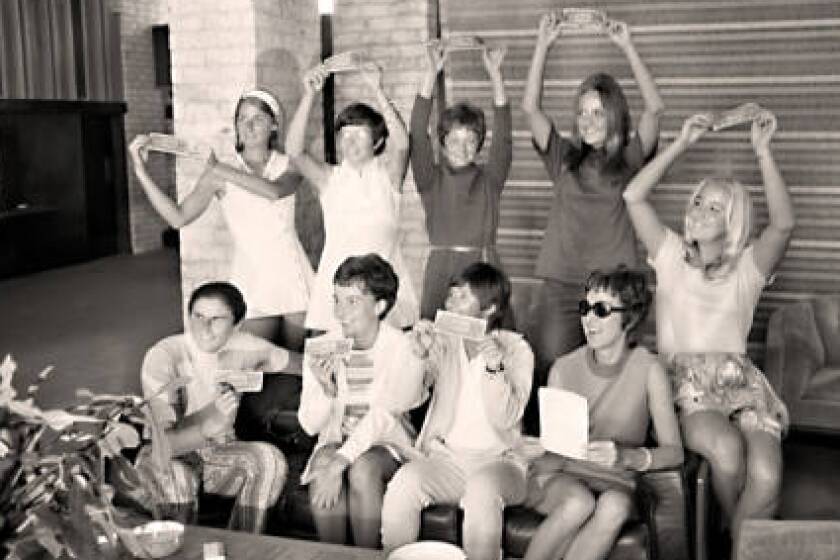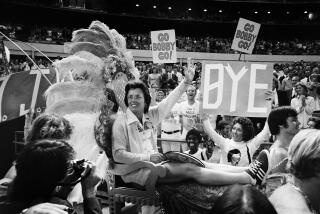Jack Jones, visionary who helped women’s tennis in its fight for equality, dies at 97
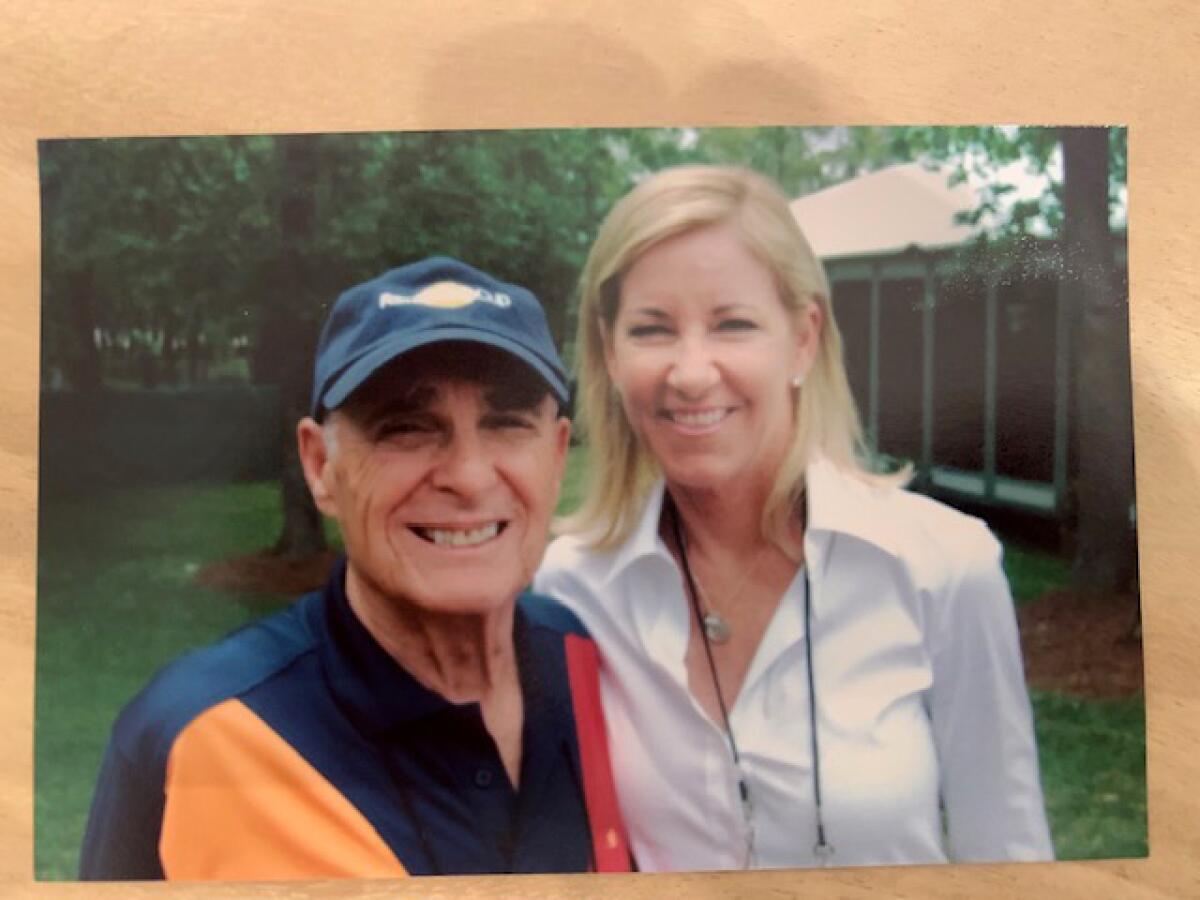
In looking at the notes left behind by Jack Jones, a visionary businessman whose love for tennis helped boost the women’s game at a time it needed smart and effective promotion, Jones’ son Cary was struck by the sense of fairness that was the foundation of his father’s work.
Jones, who died of natural causes on Sept. 2 at 97, teamed with John Moreno to stage the Family Circle Cup tournament, which debuted in 1973. It was the first women’s tennis event to offer $100,000 in prize money and the first to be broadcast on network TV. The $30,000 winner’s prize was then considered unimaginable riches.
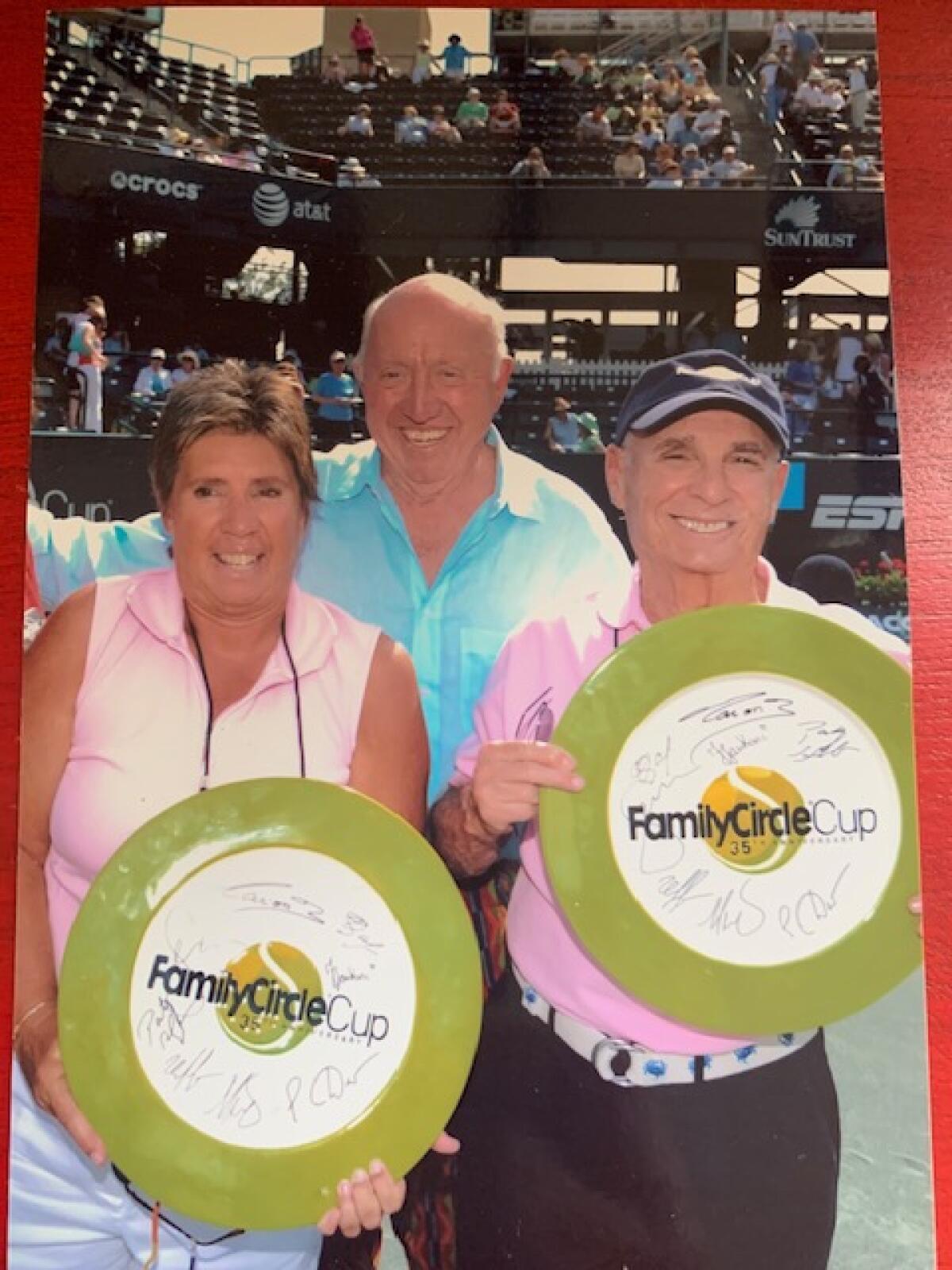
He brought that same sense of equity to his tenure as an executive at Mattel, where he insisted that children of color appear in the company’s national TV advertisements, Cary said.
Jones went on to have a long career in TV production, but it was in tennis, a sport he played on a recreational basis, that he left his biggest mark.
“He felt that the profile of women’s sports, women’s tennis should be elevated, and one way to do that was giving them exposure on national television,” Cary said. “And also he believed in equal pay for what women were doing, in contrast to what men had been earning at that time.”
Jones, who lived in Los Angeles for more than six decades, died in Camarillo. He was survived by four children, five grandchildren and the fond memories of prominent members of the tennis community. The Family Circle Cup, later renamed and moved from Hilton Head Island, S.C., to Charleston, S.C., celebrated its 50th anniversary in April.
As she releases her memoir “All In,” tennis icon Billie Jean King discusses her career, her causes and “living truthfully.”
Billie Jean King, long an advocate of equity on and off the court, recalled taking a flight to Savannah, Ga., with other players and being met by Jones and Moreno for the last leg of the trip to the inaugural tournament in Hilton Head. While there, she said players participated in clinics and other events to entertain sponsors and persuade them their investment had been worthwhile.
“This was so exciting, back in 1973. The $30,000 was unheard of at the time,” King said in a phone interview. “I loved Jack. He was ahead of his time, him and John Moreno.
“Jack truly loved tennis. He loved his family. Jack was a great friend, and relationships are everything. He loved tennis but he thought outside of the box. He was really a special human being. Kind, smart, ahead of his time. He also was a great friend through the years, and I think that’s what’s important.”
Peachy Kellmeyer, the first director of the Virginia Slims women’s tour and later a senior executive with the Women’s Tennis Assn., also paid tribute to Jones’ innovative thinking.
Wednesday is the 50th anniversary of the day the “Original Nine” women tennis players signed pro contracts for $1 each and started their own tournaments and tour.
“Jack was a man of firsts in women’s tennis,” she said, noting the Family Circle Cup’s groundbreaking TV appearance and prize money. She said Jones and Moreno made the tournament “a longtime favorite for players, fans, and TV audiences,” and added, “Our sport proudly calls Jack a man of firsts and a true friend.”
Jones also promoted the now-gone U.S. women’s indoor championships. In addition, he created the Playtex Challenge, which offered a $1-million prize to a player who could prevail on four different surfaces by winning the U.S. Indoor title, Family Circle Cup, Wimbledon and U.S. Open in a single year. Martina Navratilova came close in 1982, winning the first three of those four events and earning $500,000.
“I don’t know if any similar concept had been around,” Cary said. “But that was one of the unique things that he tried to do to help promote the women’s tour as well.”
Jones was promoting players’ ideals, not just their tournaments.
“He had great admiration for them on a number of different levels,” Cary said. “My dad had this real interest in people. He really liked people and he liked getting to know the people that both were playing on court and also were behind the scenes.”
More to Read
Go beyond the scoreboard
Get the latest on L.A.'s teams in the daily Sports Report newsletter.
You may occasionally receive promotional content from the Los Angeles Times.

